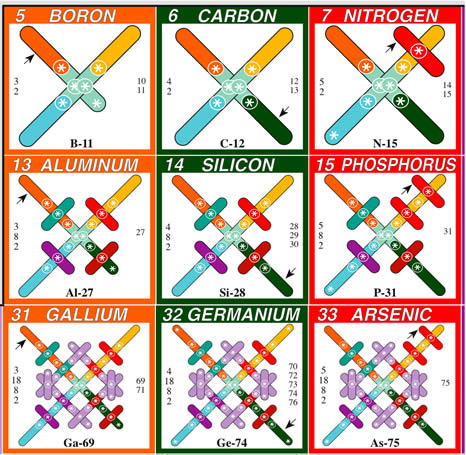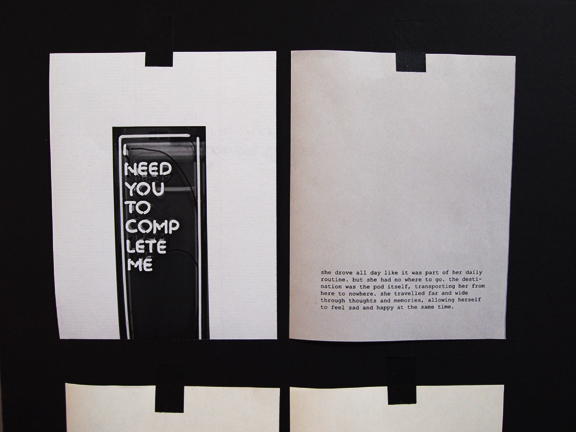Jessica Lee In Process
Work In Progress Show
"There’s something creepy about what you're doing. So, keep doing it."
My design process has been about trying to figure out what mode of design had the largest impact. In previous weeks, I have dabbled in videos, object-making, created a fictional organization, and lasercut pendants. The choice to put my project in the so-called “twitter-verse” allowed me to really test the efficacy of my projects. This is when failure becomes a reality in the form of re-tweets, follows, and favorites. I thought that the next logical (illogical?) step to manually responding to tweets was to set up a system where I can have the computer send out pre-written, generated messages. However, from small percentage of responses that I received, it didn’t do much to move beyond the one liner.
My design process has been about trying to figure out what mode of design had the largest impact. In previous weeks, I have dabbled in videos, object-making, created a fictional organization, and lasercut pendants. The choice to put my project in the so-called “twitter-verse” allowed me to really test the efficacy of my projects. This is when failure becomes a reality in the form of re-tweets, follows, and favorites. I thought that the next logical (illogical?) step to manually responding to tweets was to set up a system where I can have the computer send out pre-written, generated messages. However, from small percentage of responses that I received, it didn’t do much to move beyond the one liner.
The second idea, The Random Event Generator, looked at the more practical, potential applications for Quantum Physics (beyond multi-verse theories). I had set up a camera that could detect color in the physical objects that pass through the camera. It would then distill that information down to a 1 or 0. This process did not rightly convey a “true randomness”. I had discussed the idea of a coin toss in an earlier meeting with Tim, and will go back to that process of translating truly random quantum effects that occur in physical objects.
The question still stands, how do I move beyond the one liner, to perhaps create this other world or platform without going into, say, Sims territory by re-creating role-playing games. Some of the feedback provided suggested that I combine the two projects. Moving forward, I do not want to lose the public engagement aspect. I feel that it is an important and necessary step to gauge the success or failure of a project. The real-time feedback allows for quick adjustments to improve or to re-think the project entirely.
Am I qualified?
What makes this designer think he/she knows anything about "quantum physics" to be able to be "inspired" by it?Damn.
Getting Physical: An interview with myself.
A speculative interview where I ask myself the tough questions. Click on the image to read the full article.
Everywhere In a Flash
The following is a fictional short story that places my thesis work in a narrative space and time. It was important in the thesis process to answer the who, what, when, and why's of my designed objects, things, and systems.
Everywhere In a Flash
Everywhere In a Flash
He watched as his investments went up.
“Just as expected.”
Stocks for the biggest agricultural biotech company turned global pharmaceutical company are also up.
“Pattern recognition”, he continued, as he absorbed the light emanating from the screen. The title of an article reads “Wall Street falls after tepid earnings” but the title is meaningless. The live stream of numbers, percentages, quotes, graphs, lines, and symbols fill the screen. Each one a dot of black and white as if taken from a monochromatic pointillist painting. He sits back in his chair, analyzing the dots, waiting for behaviors and patterns to emerge from the screen. It only takes seconds, but they were enough. His hand reaches out and he places another bet.
Enter.
Confirm.
He gets up from his desk and walks toward the kitchen. Everything happens in seconds now. Time and Space collapsing upon itself everywhere around him. Hyper self awareness becomes a neurosis. At first, it was sought after, even killed for. Efficiency and intelligence became interchangeable. One ad read, “Classifications are just straitjackets, preventing people from seeing all the overlaps and intersections.” The day he realized he can analyze his own psychological state with a clear and objective viewpoint, words like
life, happiness, sadness, agony, pain,
and death
failed him. These are words that describe only one facet of emotions. Their meaning became binary. But now, his feelings become more complex as his own self awareness increases. They amplify exponentially through interactions with others and being aware of their awareness. He can’t help but be aware of others. Everything is a pattern.
He dreams but they’re not the same dreams that he had as a child, back when when people lived linearly, before they were given the ability to process vast amounts of information at once.
His emotions are multi-faceted.
His sub conscious no longer exists.
He stands in his kitchen, and thinks to himself, “I have no regrets.”
Obama visits the multi-verse
"EVERYWHERE IN SPACE-TIME SIMULTANEOUSLY—Attempting to appeal to the widest possible demographic base as Election Day draws near, President Obama made a surprise campaign stop Monday to visit an infinite series of alternate universes that vibrate on a hyperdimensional plane different from the three spatial dimensions observable in our own universe." Read the full article here.
Not convinced about multiverses and string theory? Maybe this video will convince you (spoiler-alert: Morgan Freeman believes).
Not convinced about multiverses and string theory? Maybe this video will convince you (spoiler-alert: Morgan Freeman believes).
Science on the Fringe: Visit to the Institute for Figuring
Listened to rebel Physicist Jim Carter about how he develops a process for visualizing the science as he understands it.
Detail of the Periodic Table as envisioned by Jim Carter in his Theory of Circlon Synchronicity.
Everything Stays the Same: Visit to Particle Theory Group, CalTech
What happens when, after all this, everything stays the same? That's the question I had to ask myself after visiting with Theoretical Physicist Sean Carroll at his current post at the Particle Theory Group at the California Institute of Technology.
Week 3: A Happening Day
How do you combine quantum physics with the everyday? It's a phenomena we can feel happening around us. It's not new. But what happens if we try to map this out? A Happening Day is an attempt at doing just that. Trying to make as many things happen in a day and finding connections that help inform how one happening evolves into the next.
Week 2: Meditations
After the initial thesis gateway, I spent the summer absorbing as many readings, talks, blogs, thoughts, and insights (and sometimes jokes) about everything and anything related to Quantum Theory. The process was overwhelming and I often found myself feverishly taking notes in order to understand the physics.
At the end of summer, I amassed a large amount of notes paraphrasing and rephrasing what I had absorbed but found myself frustrated with my jottings. Expressing my frustration to a colleague, they shared with me their process of how they meditate on a subject they were researching. "Every time you read or see something interesting, stop for a moment and give yourself a few minutes to just sketch, draw, or doodle."
"Duh." That seemed so obvious but I hadn't thought of doing it myself before. Since then I've been allowing myself to meditate on the subject of Quantum Theory, exploring the gap between the hard facts and my obsession with them.
Subscribe to:
Posts (Atom)







































